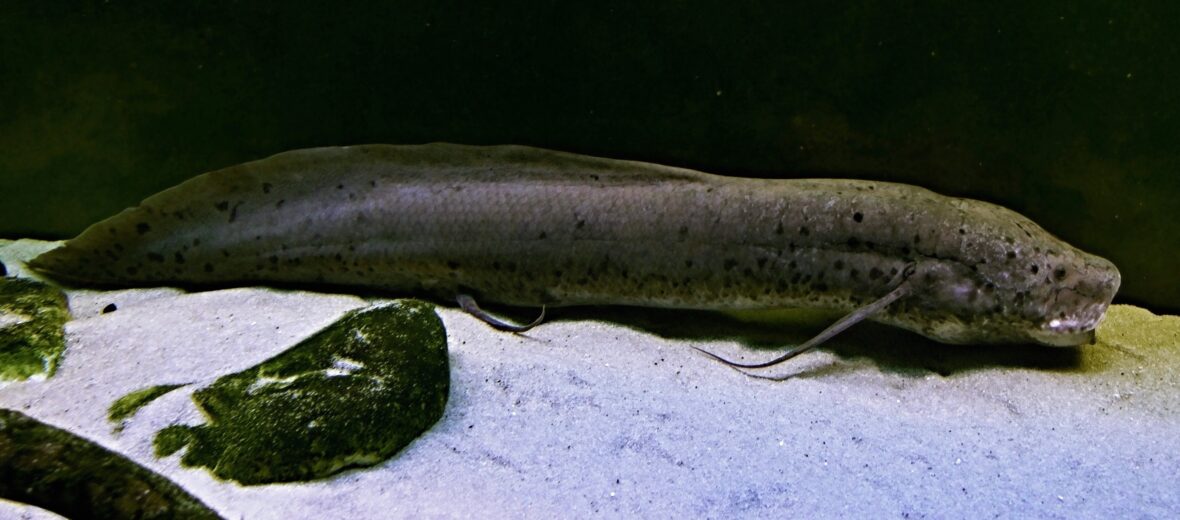
The lungfish can be found on 3 continents: Africa, Australia, and South America. But we will be focusing, primarily, on African lungfish. There have been many a speculation as to whether or not lungfish were the gap between aquatic and land animals. The debate rages on. These odd creatures prefer backwaters, freshwater swamps, and small rivers. They can be found in Cote d’Ivoire, Gambia, Guinea, Niger, Senegal, Sierra Leone, and Western Sudan. All lungfish are listed as Least Concern by the IUCN.
First the Stats…
Scientific name: Protopterus annectens
Weight: Up to 8 lbs.
Length: Up to 3 feet
Lifespan: Up to 4 years
Now on to the Facts!
1.) While the ancestors of today’s lungfish only had a single lung, today’s lungfish have 2, sans the Australian species; which still has but a single lung.
2.) Ancient lungfish also had stockier limbs, as opposed to the modern day critters who’s limbs are thin and relatively weak, in comparison.
3.) They tend to propel themselves forward with alternating limb movement, much like land animals do. Hence the belief that land animals evolved, in part, from these creatures.
4.) Fossil records show that these critters have been around since the Triassic period.
5.) They can breathe through their mouth as well as respire through their gills. But need to have breathable air in order to survive.
But wait, there’s more on the West African lungfish!
6.) Warmer water is preferred, ranging from 76° – 86° F.
7.) A burrow is created in the mud with an air hole for them to breathe, during the dry season. They then enter into a sort of hibernation called estivation. During this phase, they will not eat, drink, or defecate. They line their den with a special mucus coating that helps keep the burrow moist.
Did you know…?
African lungfish can go up to 3.5 years without eating!
8.) Omnivorous (eat plant and animal matter), these critters will eat fish, crustaceans, insects, worms, mollusks, amphibians, and plant matter.
9.) South American and African lungfish can actually drown if they can’t get to the surface in time to breathe.
10.) Only the Australian lungfish can breathe through its gills.
But wait, there’s still more on the West African lungfish!
11.) Females lay their eggs in a weeded area in their habitat. When the eggs are laid, the males take over and guard them till they hatch.
12.) The larvae are hatched baring external gills that are reabsorbed during their metamorphosis into developed lungfish.
13.) As they develop from juveniles to adults, their teeth become fused into bony plates.
14.) Juvenile lungfish may have predators, like larger fish, but adults have no known predators.
Now a Short West African Lungfish Video!
Also, check out the Critter Science YouTube channel. Videos added frequently!
Want to suggest a critter for me to write about? Let me know here.



